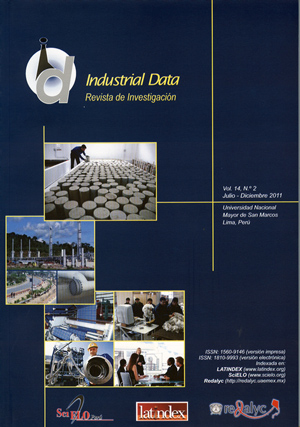Treatment of effluent textiles with ultraviolet light
DOI:
https://doi.org/10.15381/idata.v14i2.6217Keywords:
textile effluent, titanium dioxide, ultraviolet light, solar energyAbstract
The use of clean technologies for the treatment of textile effluents is essential to achieve a significant contribution by the textile industry, environmental treatment of them. According to the literature, the dyes used in textile industry are hardly degradable and have strong opposition to biological treatments are subjected to appropriate wastewater. At lower concentrations of hydrogen peroxide (oxygenated water) leads to better dye fading. It also shows that lower concentrations of titanium dioxide system response to the degradation of color, is better, this could be because that lower concentrations of titanium dioxide, hydroxyl radical formation is lower, thus increasing its efficiency the process. The optimum time for color degradation is 2 h and the concentration of titanium dioxide to achieve this time was 50 ppm
Downloads
Downloads
Published
Issue
Section
License
Copyright (c) 2011 Oscar Rafael Tinoco Gómez, Ana María Medina Escudero, Hernán Zapata Gamarra

This work is licensed under a Creative Commons Attribution-NonCommercial-ShareAlike 4.0 International License.
AUTHORS RETAIN THEIR RIGHTS:
a. Authors retain their trade mark rights and patent, and also on any process or procedure described in the article.
b. Authors retain their right to share, copy, distribute, perform and publicly communicate their article (eg, to place their article in an institutional repository or publish it in a book), with an acknowledgment of its initial publication in the INDUSTRIAL DATA.
c. Authors retain theirs right to make a subsequent publication of their work, to use the article or any part thereof (eg a compilation of his papers, lecture notes, thesis, or a book), always indicating the source of publication (the originator of the work, journal, volume, number and date).






